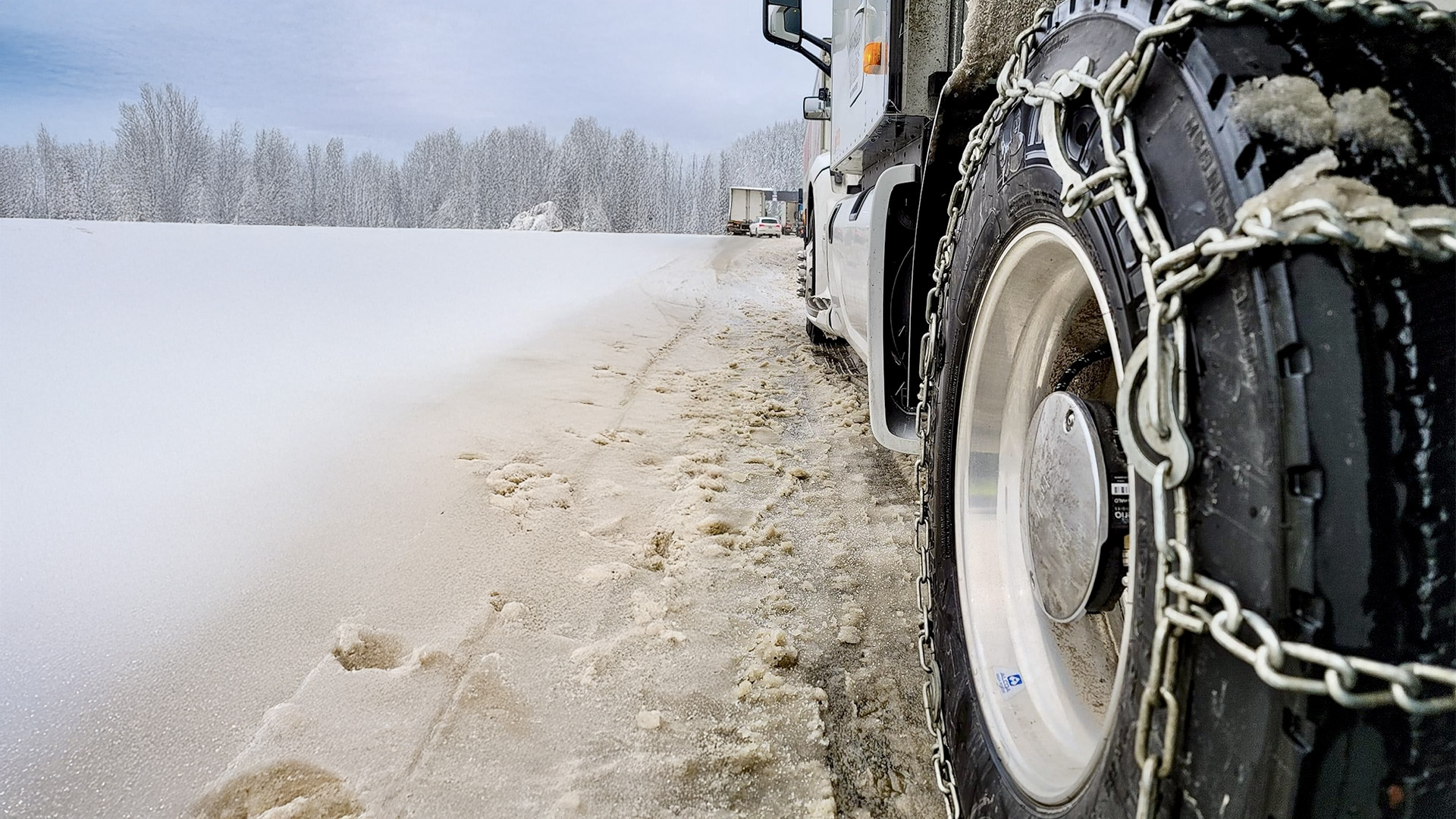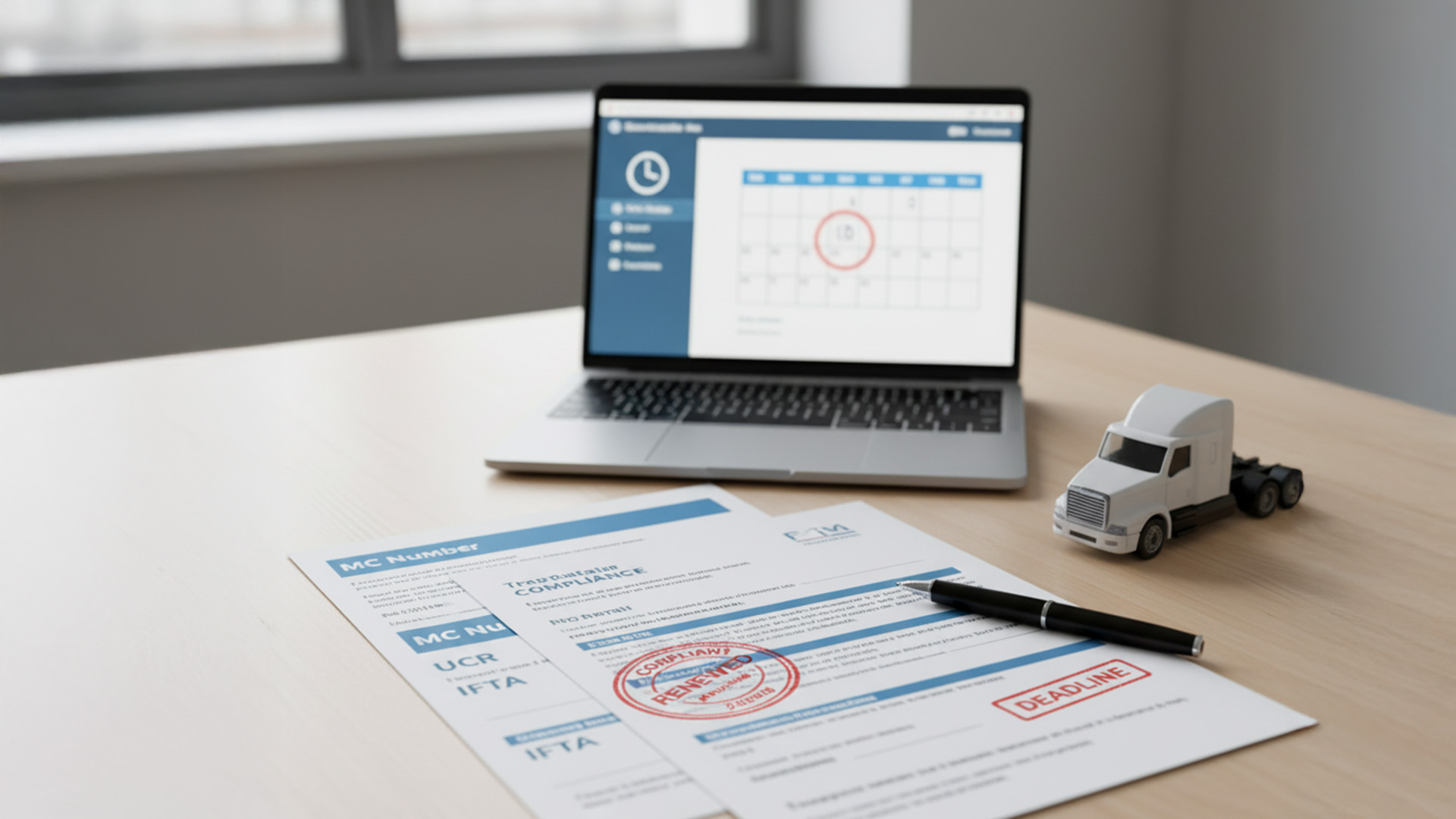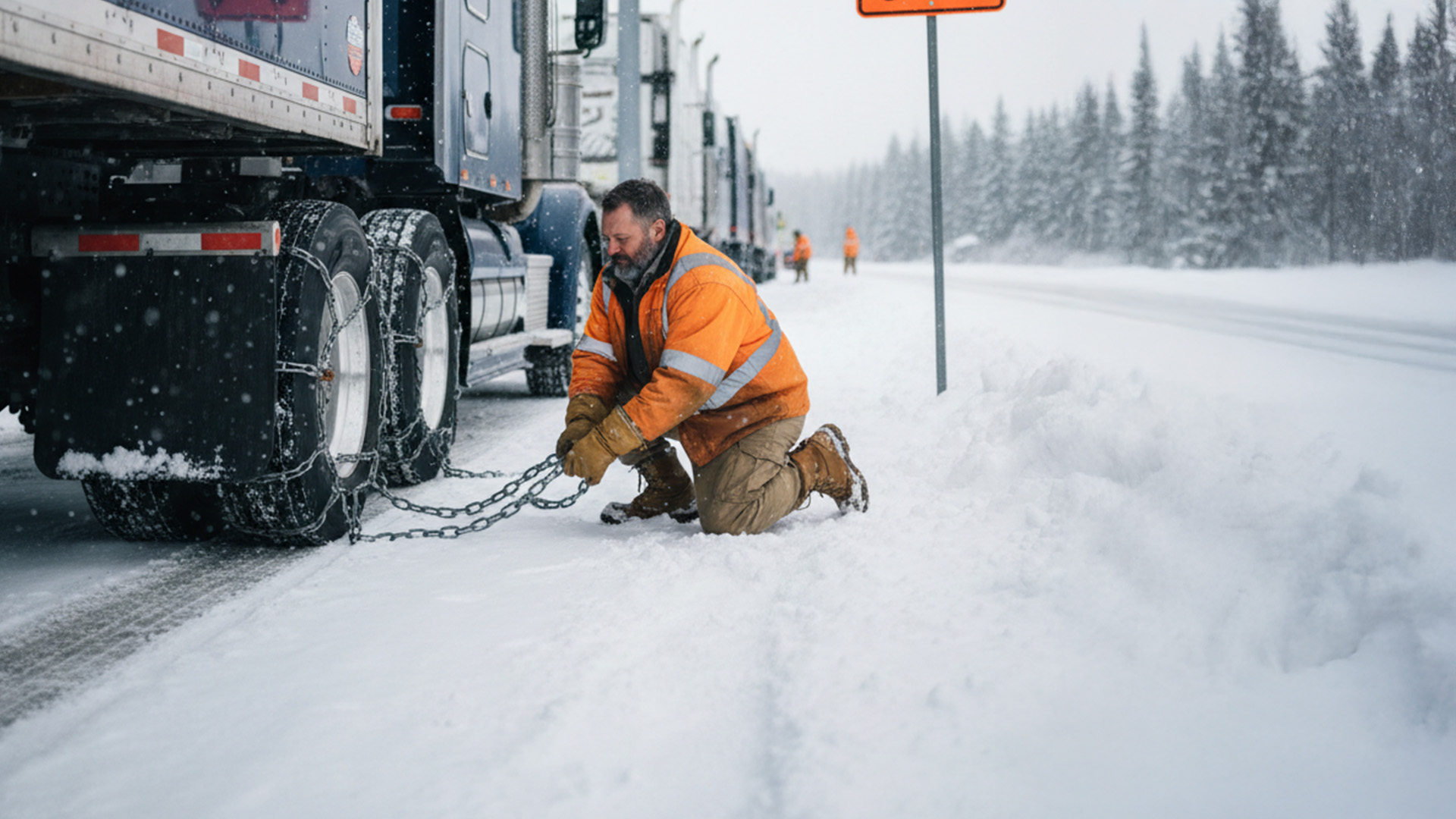Tire chain laws are mandated on the state level. Tire chain laws dictate when you should, shouldn’t and must use tire chains. Many states allow chains when needed at the driver’s discretion, but some states restrict them depending on the time of year and type of chain.
Using the incorrect type of chain or using chains that aren’t in accordance with these laws can subject you to fines. Chains can not only damage your truck and trailer; they can also damage the roads. This is why states have laws regarding their usage.
Use the chart below for state-by-state guidance on when you’re required to carry chains in your truck, when you need to use them and when you shouldn’t use them. Failing to follow these laws can result in fines.
For more updated information, refer to each state’s Department of Transportation (DOT) website.
State | Chain Law Summary |
Allowed when required due to snow, rain or other poor weather conditions. | |
Tire chain laws vary by location and time of year, check local laws. Special permits may be obtained to use chains in prohibited zones. | |
Allowed when required due to snow, rain or other poor weather conditions. | |
Allowed during certain times of year when required due to snow, rain or other poor weather conditions. | |
Tire chain controls may be established in mountain areas. Follow posted signs along the highway. At least eight chains are needed to comply with regulations. | |
Drivers must carry tire chains in certain areas September 1 to May 31. To avoid fines, check local laws and use chains when required. | |
Chains and studded tires may be used November 15 to April 30. | |
Chains are allowed when needed from October 15 to April 15. | |
No tire chain laws. | |
Tire chains required when posted on signage. | |
No tire chain laws. | |
Studded tires are allowed October 1 to April 30. Chains are allowed as needed and required on some mountain passes. | |
Allowed when required due to snow, rain or other poor weather conditions. | |
Allowed when required due to snow, rain or other poor weather conditions. | |
Allowed when required due to snow, rain or other poor weather conditions. | |
Allowed when required due to snow, rain or other poor weather conditions. | |
May not be used unless the road is ice-covered or the vehicle has an ice shoe at least 6 inches wide. Limit on diameter and spacing. | |
Allowed when required due to snow, rain or other poor weather conditions. | |
Allowed when required during certain times of year due to snow, rain or other poor weather conditions. Studs, wires and spikes are prohibited otherwise from May 1 to October 1. | |
Required when a snow emergency has been declared, but not allowed on vehicles weighing more than 10,000 lbs. | |
Permitted when necessary from November 1 to May 1. | |
Allowed when required due to snow, rain or other poor weather conditions. | |
Allowed when required due to snow, rain or other poor weather conditions. | |
Allowed when required due to snow, rain or other poor weather conditions. | |
Allowed when required due to snow, rain or other poor weather conditions. Not permitted April 1 to November 1. | |
Chains may be required when a chain-up sign is posted. Vehicles are required to carry tire chains October 1 to April 1 when indicated. | |
Allowed when required due to snow, rain or other poor weather conditions. | |
Required on all vehicles over 10,000 pounds when posted. | |
Allowed when required due to snow, rain or other poor weather conditions. | |
Allowed when required due to snow, rain or other poor weather conditions. | |
Allowed when required due to snow, rain or other poor weather conditions. | |
Allowed when required October 16 to April 30. | |
Allowed when required due to snow, rain or other poor weather conditions. | |
Studded tires allowed between October 15 and April 15. Otherwise, tire chains are allowed when required due to snow, rain or other poor weather conditions. | |
Studded tires allowed between November 1 and April 15. Tire chains are not allowed. | |
Allowed when required due to snow, rain or other poor weather conditions. | |
Allowed when required due to snow, rain or other poor weather conditions. Follow posted signs for usage requirements. | |
Allowed when required due to snow, rain or other poor weather conditions. | |
Allowed when required due to snow, rain or other poor weather conditions. | |
Allowed when required due to snow, rain or other poor weather conditions. | |
Allowed when required due to snow, rain or other poor weather conditions. | |
Allowed when required due to snow, rain or other poor weather conditions. | |
Allowed when required due to snow, rain or other poor weather conditions. | |
Allowed during October 1 and April 30, when posted or when road conditions warrant it. | |
Allowed when required due to snow, rain or other poor weather conditions. Required in certain areas when posted. | |
Allowed when required due to snow, rain or other poor weather conditions. | |
Required on certain routes from November 1 to April 1. Check local laws and use chains when required. | |
Allowed when required due to snow, rain or other poor weather conditions. Chains mustn’t come in direct contact with the road surface. | |
Allowed when required due to snow, rain or other poor weather conditions. Chains mustn’t come in direct contact with the road surface. | |
Allowed when required due to snow, rain or other poor weather conditions. Chains may be required in extreme weather conditions. |




